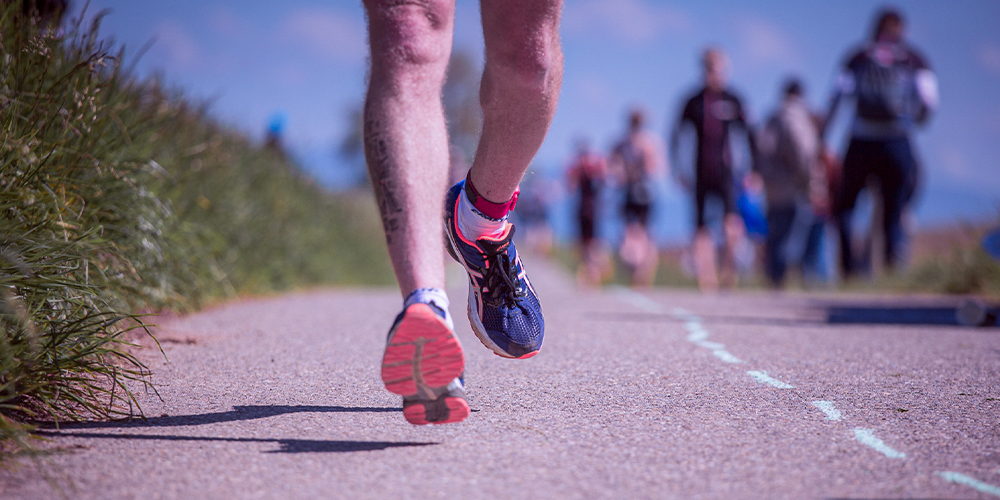There are different approaches to achieving the desired running goals. One key element is a well-balanced training program that harmonizes exertion and recovery. Running technique is equally important, particularly stride length and stride frequency, which often raise questions. It therefore makes sense to focus specifically on these aspects.
The stride frequency
The stride frequency, often measured with modern running watches, indicates how often your foot touches the ground per minute. This contrasts with stride length, which defines the distance you cover with a single stride.
You don’t necessarily need high-tech equipment to get an initial impression of your stride frequency. Simply count how many times your left foot touches the ground in 60 seconds and double this number to determine your steps per minute.
Your running speed is largely determined by the interplay between your stride frequency and stride length. A longer stride length at a constant frequency automatically leads to a higher pace. However, excessively long strides pose the risk of placing the foot ahead of the body’s center of gravity, thereby slowing down the running motion. This occurs because the body must then be shifted back over the center of gravity, resulting in a loss of movement dynamics.
What’s the optimal frequency?
There is no universal “perfect” stride frequency because the optimum frequency depends on personal factors such as body length. Running intensity also plays a role: the cadence is generally lower for relaxed jogging than for intensive running.
However, elite runners usually run at a frequency of over 180 steps per minute in competition, some even over 200. One of the main advantages of a higher cadence is the reduction in strain on joints and muscles, as the load is distributed more evenly at a higher frequency. For amateur runners, the average is more likely to be between 150 and 170 steps per minute.
Be careful not to take too many steps
If your frequency falls below 160, there is a risk that your steps will be too long. The problem lies not only in frequent heel strikes during long steps (most runners do this for longer distances), but also in landing the foot in front of the hip, above the body’s center of gravity, while the knees are extended. Landing in front of the body’s center of gravity with the knees extended exposes the body to strong forces due to the reduced cushioning possibilities.
How to increase stride frequency?
Initially, it’s advisable to adopt a gradual approach to this change, avoiding immediate increases of 20 steps per minute. A progressive 5% increase over a longer period is reasonable.
Short “frequency loads” can be a good start for a gradual increase in step frequency. The aim here is to increase your usual step frequency by around 5% over a suitable period of time. Music can be a great help in this process. Search your streaming service for a playlist with songs that have the exact BPM number you are aiming for, for example “170 BPM”. This will make it easier for you to keep the beat during your workouts.
Conclusion
Various basic exercises from the running ABC can help you to increase your speed. By paying particular attention to your posture, working on your running technique and incorporating specific exercises, you can achieve the ideal ratio between stride length and stride frequency.
However, it is important to remember what has already been explained: The “optimal” frequency varies greatly from person to person. It is therefore not advisable to stick rigidly to a universal ideal value. Rather, it’s about discovering your personal rhythm and adapting accordingly. The key to success lies in self-observation and the ability to pay attention to your body’s signals as you work towards your goal.
You may also find the following interesting:
Create a training plan for triathlon, cycling, and running based on artificial intelligence with 2PEAK that adapts to your performance after each training. Download the app and start revolutionizing your training.


